The Best Draft Pick of All Time for Each NFL Team

Let’s be clear from the top: This is about the best player ever drafted by a team, not the best value ever found by the club.
If that were the case, we’d have a list of really good players in the fifth round instead of Hall of Fame ones in the first and second rounds. That’s madness.
For some franchises, the pick was obvious. Nobody is besting Lawrence Taylor for the Giants (sorry, spoiler alert). For others, it was extremely difficult, and value had to be the tiebreaker.
Got it? Good. Let’s get to the list of best draft picks for every franchise.
Arizona Cardinals
Larry Fitzgerald Jr., WR, 2004
This was essentially a choice between safety Larry Wilson and Fitzgerald. While Wilson went in the seventh round of the 1960 draft, Fitzgerald is the most iconic Cardinals player. He also helped bring Arizona back to relevance after the franchise had won a single playoff game from ’48 to 2007.
Fitzgerald, picked No. 3 out of Pittsburgh, made 12 Pro Bowls and caught 1,432 passes for 17,492 yards and 121 touchdowns. Those marks rank second, second and sixth all time, respectively.
Atlanta Falcons
Julio Jones, WR, 2011
While Matt Ryan, Claude Humphrey, Deion Sanders and even Tommy Nobis have strong cases, Jones is the right call. Once he retires, it won’t be a long wait until he gets the call for Canton, with a case led by 10 great years in Atlanta.
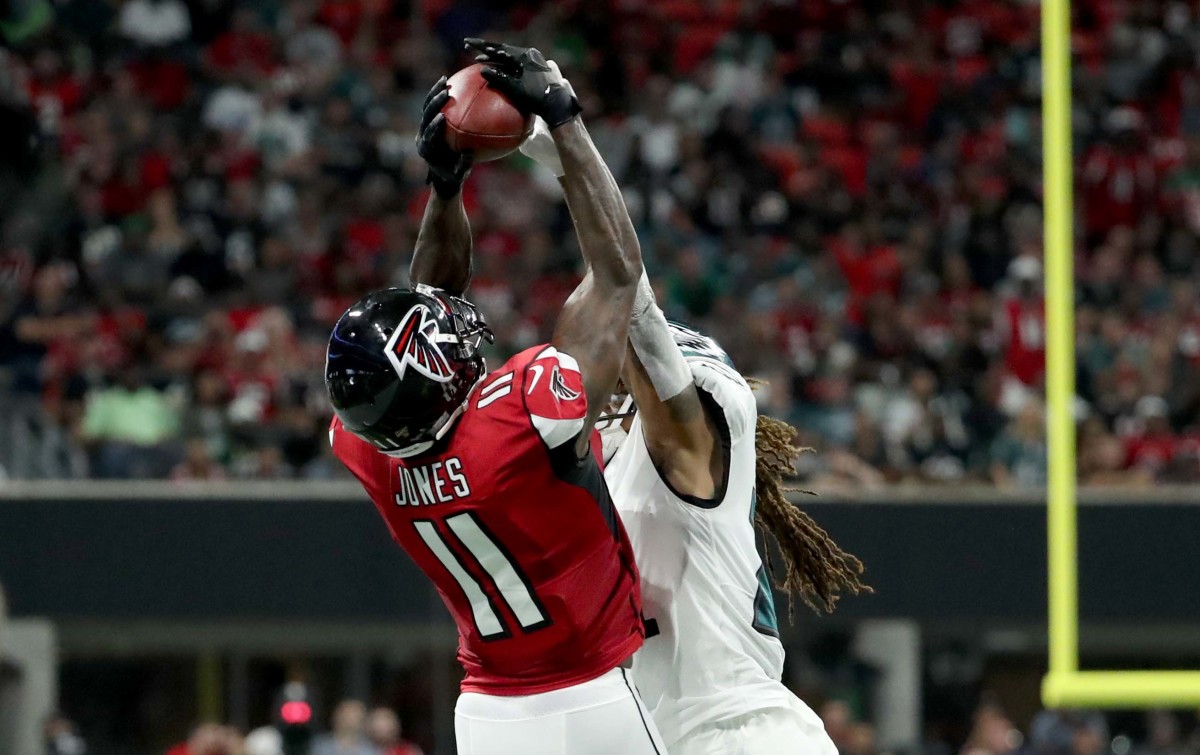
Jones is a two-time first-team All-Pro, a seven-time Pro Bowler and a member of the 2010s All-Decade Team. He led the league twice in receiving yards and once in receptions, all while posting six consecutive years of at least 1,394 yards.
Baltimore Ravens
Ray Lewis, LB, 1996
Lewis is the defining player of the Ravens’ young history. A first-round pick in 1996—alongside fellow Hall of Famer Jonathan Ogden—Lewis immediately made his mark on the NFL.
All told, Lewis went to 12 Pro Bowls, was a seven-time first-team All-Pro, was named to the 2000s All-Decade Team and won two Super Bowls. He also led the league in tackles three times and finished fifth in the MVP balloting in ’00.
Buffalo Bills
Bruce Smith, DE, 1985
The No. 1 pick, Smith proved worth the investment for the Bills. Buffalo came off a 2–14 season and selected the Virginia Tech product, who went on to become the NFL’s all-time sacks leader with 200.
Smith helped the Bills reach four consecutive Super Bowls (1990–93) while also totaling double-digit sack totals in all but one year from ’86 to ’98. Smith was named to a pair of All-Decade teams and was twice named Defensive Player of the Year.
Carolina Panthers
Julius Peppers, edge, 2002
Drafted second, Peppers became one of the best players of his generation. He made an instant impact, winning Defensive Rookie of the Year and helping the Panthers to their first Super Bowl. He also went on to nine Pro Bowls and a pair of All-Decade teams.
Perhaps most impressive about Peppers was his longevity. The edge rusher made the Pro Bowl at ages 24 and 35, and at 37 years old recorded 11.5 sacks in his second stint with Carolina.
Chicago Bears
Walter Payton, RB, 1975
The Bears have had legions of great players over the years: Dick Butkus and Gale Sayers in 1965, the famed class of ’83, and on and on. But nobody epitomizes Chicago and the Bears more than Walter Payton.
A first-round pick, Payton rushed for at least 1,200 yards in 11 straight seasons, save for the strike-shortened campaign of 1982. He broke Jim Brown’s all-time rushing yardage record in ’84, all while making two All-Decade teams, winning the ’77 MVP and being named a five-time first-team All-Pro. The NFL’s Man of the Year award is also named in his honor.
Cincinnati Bengals
Anthony Muñoz, OT, 1980
Arguably the greatest left tackle of all time, Muñoz was plucked out of USC in the first round by a Bengals team trying to rebuild. Two years after selecting Muñoz, Cincinnati reached its first Super Bowl, one of two the star protector would play in with the Bengals.
Muñoz played all 13 years of his professional career in Cincinnati, racking up 11 Pro Bowls and nine first-team All-Pro honors. He was also named the 1991 Walter Payton Man of the Year
Cleveland Browns
Jim Brown, RB, 1957
How great was Brown? He played for nine seasons and was the NFL’s rushing leader in eight of those. He also helped Cleveland win the 1963 title by rushing for 1,863 yards and 12 touchdowns on 6.4 yards per carry, all figures that led the league.
Had Brown not retired early to go into acting, he would have rushed for far beyond the 12,312 he finished with. In his final season of 1965, Brown ran for 1,544 yards and 17 touchdowns, again pacing the circuit in both categories.
Dallas Cowboys
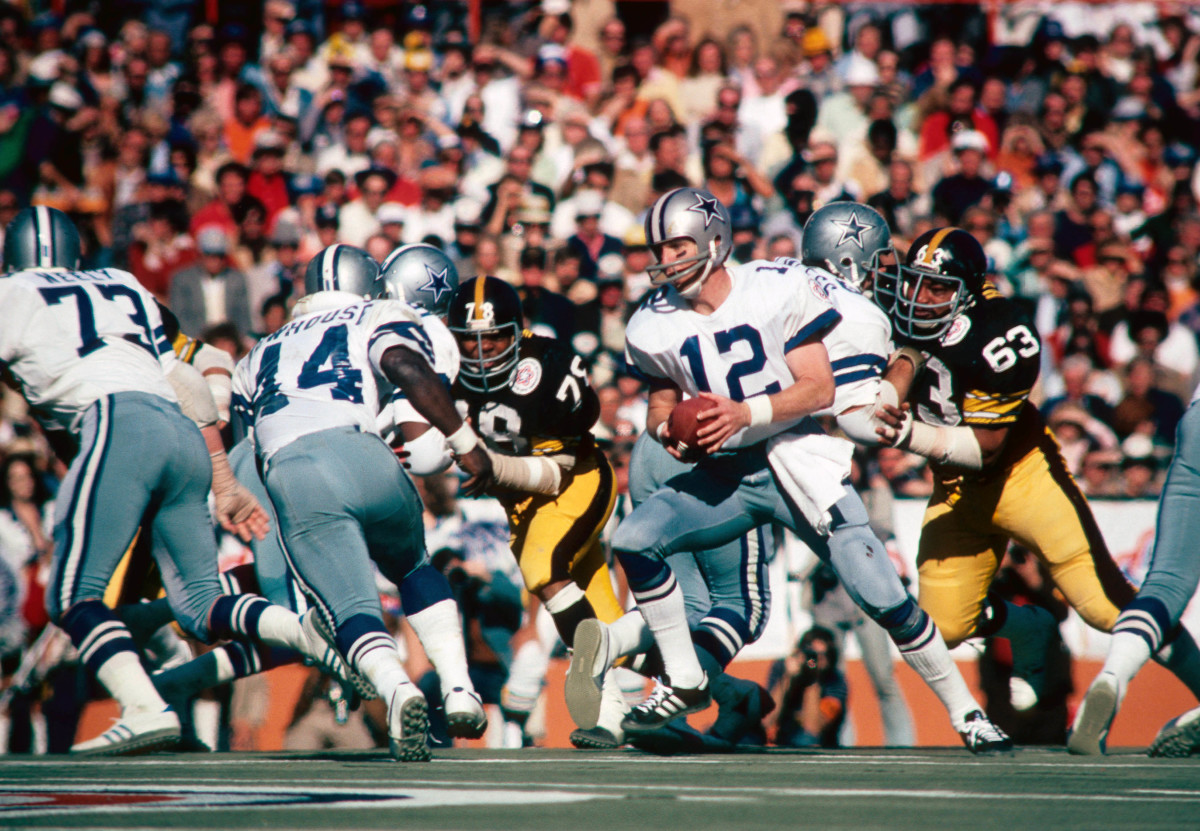
Roger Staubach, QB, 1964
Staubach is a fascinating case. The Cowboys had one of the greatest classes in 1964, taking three Hall of Famers including Staubach, defensive back Mel Renfro and receiver Bob Hayes. However, because the former Heisman winner was committed to the Navy, he didn’t join Dallas until ’69, after he had served a mandatory four years on active duty.
Once he did, Staubach made up for lost time. The Cowboys won two Super Bowls and reached three under his command, while missing the playoffs only once until his retirement following the 1979 season. Staubach was a Super Bowl MVP and six-time Pro Bowler while also making the ’70s All-Decade Team.
Denver Broncos
Terrell Davis, RB, 1995
The Broncos were desperately trying to win a Super Bowl before John Elway retired, and then they found Davis in the sixth round out of Georgia. Despite his low draft status, Davis immediately became a starter and notched four straight 1,000-yard rushing seasons, capped by 2,008 yards in 1998.
Davis helped lead Elway and the Broncos to consecutive titles in 1997 and ’98, with Davis taking home Super Bowl XXXII MVP honors. Despite his career being cut short by knee injuries, Davis reached the Hall of Fame having played only 78 games.
Detroit Lions
Barry Sanders, RB, 1989
It’s impossible to overstate the greatness of Sanders. Drafted in the first round out of Oklahoma State, Sanders played 10 years for an underwhelming Lions franchise, with quarterbacks such as Scott Mitchell, Rodney Peete and Erik Kramer.
Still, Sanders never rushed for less than 1,115 yards and was a Pro Bowler every year of his career, while also being named a first-team All-Pro six times. Sanders also earned co-MVP honors in 1997, rushing for 2,053 yards. If he hadn’t retired at 30 years old, Sanders might have rushed for 20,000 career yards.
Green Bay Packers
Bart Starr, QB, 1956
Here’s an example of needing value to break ties. The Packers have had scores of great draft picks over their history, but none match Starr’s talent, value and importance. A 17th-round pick in 1956 out of Alabama, Starr was initially a benchwarmer until coach Vince Lombardi arrived in ’59.
Starr eventually led the Packers to five world championships in seven years, including the NFL’s only modern three-peat from 1965 to ’67. Starr also won MVP honors in ’66 and was named to the All-Decade Team as an iconic member of Green Bay’s dynastic run.
Houston Texans
J.J. Watt, DE, 2011
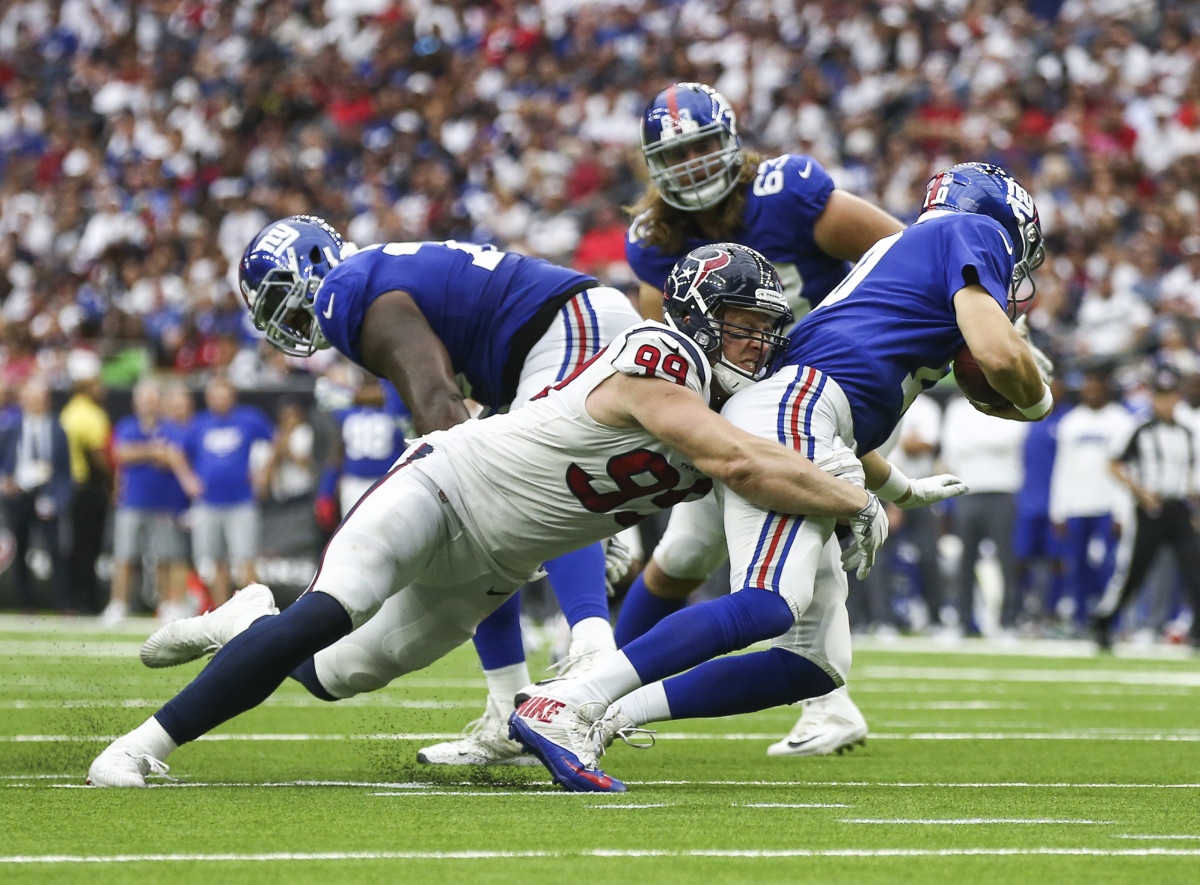
There was no other choice. Watt is clearly the best player in the Texans’ short history to ever grace the field. A first-round pick out of Wisconsin, Watt immediately became one of the NFL’s best defenders, notching 20.5 sacks to lead the league in his second campaign.
Watt played 10 years with Houston and was a three-time Defensive Player of the Year while making five first-team All-Pro squads. In 2014, Watt finished second in the MVP voting after posting a league-best 29 tackles for loss.
Indianapolis Colts
Peyton Manning, QB, 1998
Manning’s career accomplishments feel like a video game simulation. After being drafted No. 1, the former Volunteers star won two Super Bowls and went to four, with 14 Pro Bowl appearances and five MVP awards.
With the Colts, Manning went 141–67, throwing for at least 4,000 yards in 11 of his 14 seasons. Manning also threw 399 touchdowns for Indianapolis, leading the franchise to eight division titles before becoming a first-ballot Hall of Famer.
Jacksonville Jaguars
Tony Boselli, OT, 1995
The first pick in Jaguars history, Boselli was bedeviled by knee injuries that ended his great career after seven seasons. Still, nobody has ever been more dominant for Jacksonville.
A five-time Pro Bowler and three-time first-team All-Pro, Boselli is a 1990s All-Decade Team member and helped Jacksonville to a pair of AFC championship game appearances in the ’90s. Despite a brief career, Boselli earned enshrinement into the Hall of Fame in 2022.
Kansas City Chiefs
Patrick Mahomes, QB, 2017
Let’s not make this more complicated than it needs to be. While the Chiefs have had other phenomenal players over the years, none transformed the franchise the way Mahomes has.
Since becoming the starting quarterback in 2018, Mahomes has twice been named both league MVP and Super Bowl MVP, and won two championships despite being only 27 years old. The only other players in league history to match those credentials? Joe Montana and Tom Brady. Mahomes has also thrown for more than 5,000 yards twice, and at least 35 touchdowns on four occasions.
Las Vegas Raiders
Gene Upshaw, G, 1967
The Raiders are loaded historically with all-time players, but Upshaw might be the best. A first-round pick, Upshaw helped the Silver and Black win two Super Bowls and reach three during his time in Oakland.
Upshaw was a dominant interior force, earning 1970s All-Decade honors along with seven Pro Bowls and five first-team All-Pro nominations. Playing between fellow Hall of Famers in left tackle Art Shell and center Jim Otto, Upshaw helped create one of the best offensive lines in NFL history.
Los Angeles Chargers
Junior Seau, LB, 1990
While Dan Fouts, LaDainian Tomlinson and Kellen Winslow Sr. all have arguments, nobody compares to the singular, lasting brilliance of Seau for the Chargers.
Seau played 13 years in San Diego, making 12 consecutive Pro Bowls (1991–2002) and six All-Pro first teams. The USC product was also named the 1994 Walter Payton Man of the Year while leading the Chargers to their first and only Super Bowl appearance. Not surprisingly, Seau was inducted into the Hall of Fame in 2015 as a first-ballot choice.
Los Angeles Rams
Aaron Donald, DT, 2014
Donald might seem like a shortsighted choice from a historical perspective, considering the Rams also had Deacon Jones and Merlin Olsen once upon a time. However, Donald has a real case as the best to ever play his position.
Donald amassed Pro Bowl campaigns in each of his nine seasons with the Rams while also being named a first-team All-Pro seven times. Despite playing inside and facing constant double teams, the Pittsburgh product has 103 sacks, helping him earn three Defensive Player of the Year awards.
Miami Dolphins
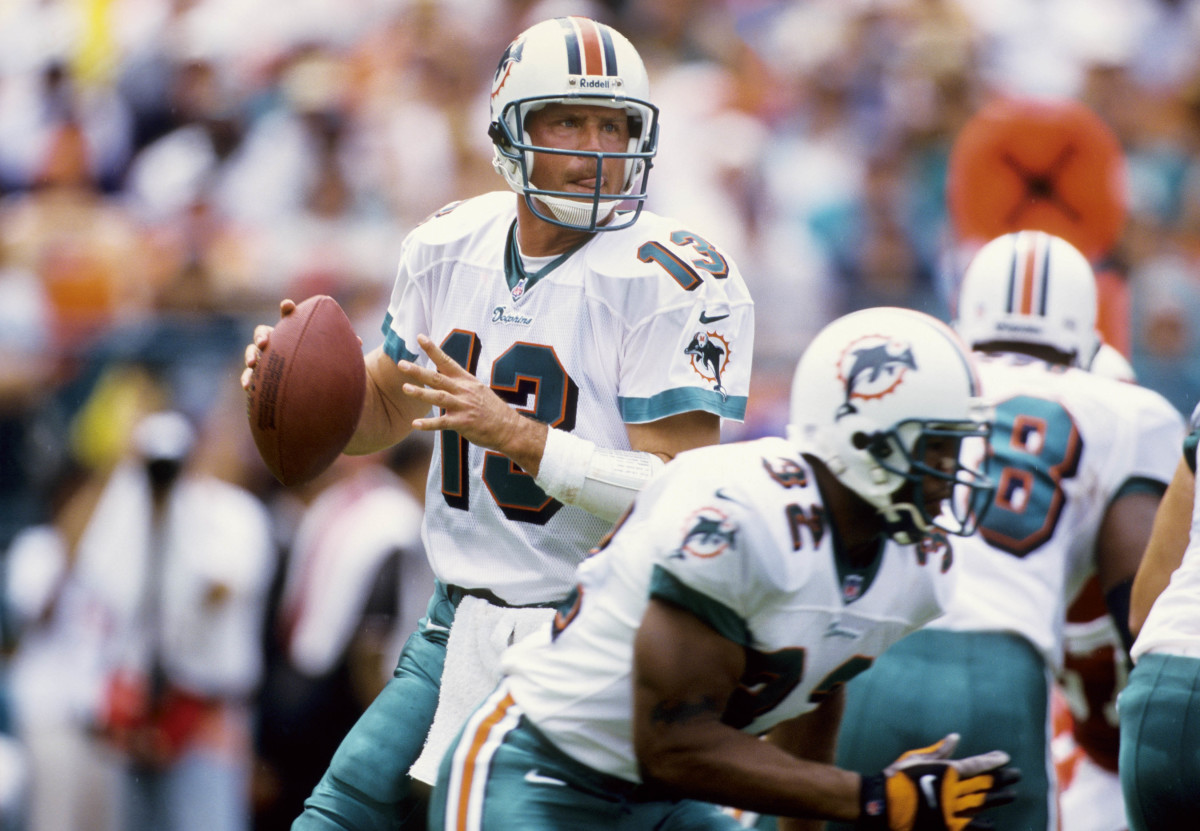
Dan Marino, QB, 1983
Somehow, Marino was the sixth quarterback off the board in 1983; the Dolphins scooped him up with the No. 27 pick. In ’84, Marino showed the rest of the league what it passed on when he threw for an unfathomable 5,084 yards and 48 touchdowns, both records by wide margins at the time.
Although he never won a Super Bowl, Marino is unquestionably one of the greatest to ever play. He’s a nine-time Pro Bowler, three-time first-team All-Pro and first-ballot Hall of Famer, finishing with 61,361 passing yards.
Minnesota Vikings
Alan Page, DT, 1967
The Vikings have had a slew of great defensive players over the years. Offensively, there’s quarterback Fran Tarkenton, guard Randall McDaniel and receiver Randy Moss. Yet nobody was more dominant than Page.
A star out of Notre Dame, Page destroyed NFL offensive lines throughout his 16 seasons in the league, unofficially credited with 148.5 sacks. Page won the 1971 NFL MVP and earned ’70s All-Decade honors, while also helping Minnesota reach four Super Bowls. Page was a five-time first-team All-Pro and became a Hall of Famer in ’88.
New England Patriots
Tom Brady, QB, 2000
With due respect to John Hannah and other Patriots greats of the Bill Belichick era, this was no contest. Famously picked No. 199 of the 2000 draft, Brady went on to the greatest career in NFL history, playing until the end of ’23.
Ultimately, Brady won seven Super Bowls and reached 10, while setting career marks for wins, touchdown passes and passing yardage. He also reached 15 Pro Bowls, won three league MVPs and earned five Super Bowl MVPs. The list of accomplishments is seemingly unending.
New Orleans Saints
Willie Roaf, OT, 1993
The Saints spent much of their first 35 years bumbling through the NFL as a speed bump for good teams, but they got it right with the No. 8 pick in 1993.
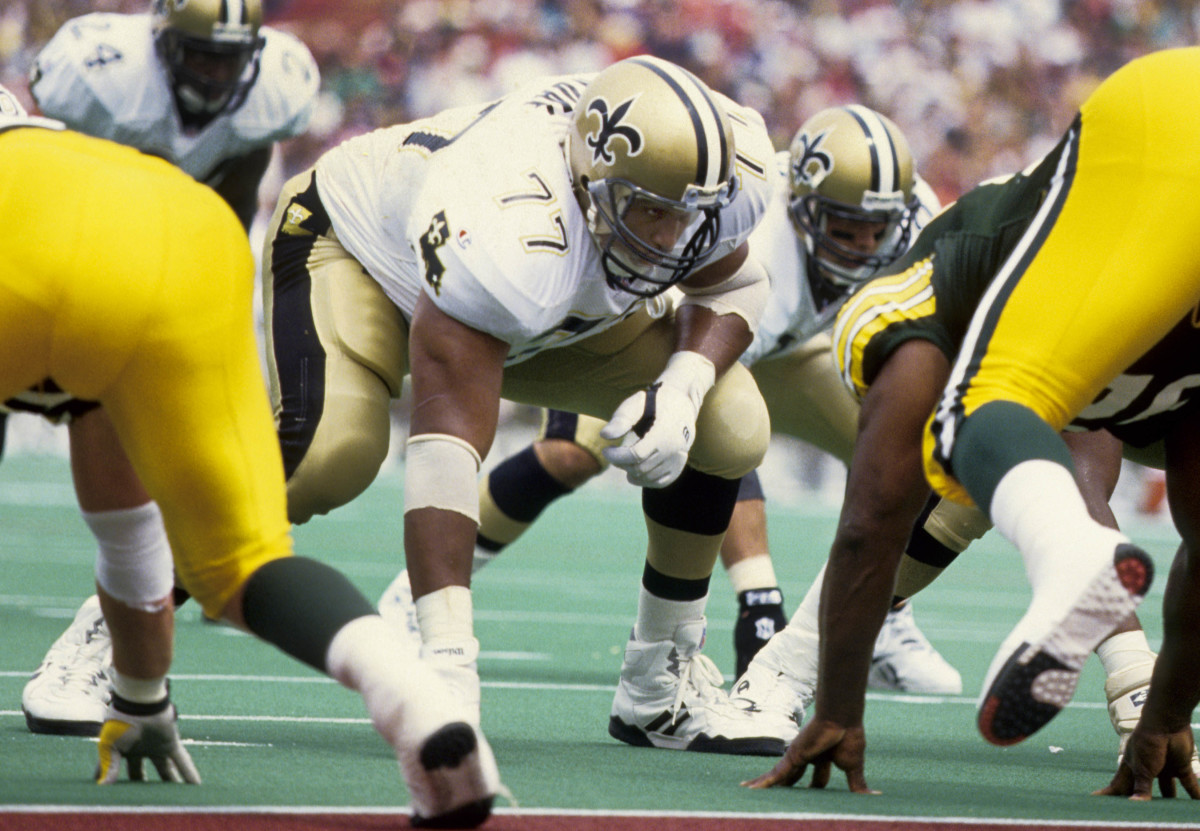
Roaf instantly became one of the league’s top left tackles, starting 131 games over nine seasons with the Saints, earning seven trips to the Pro Bowl and receiving two first-team All-Pro nods. After four elite years in Kansas City, Roaf retired and was elected to the Hall of Fame in 2012.
New York Giants
Lawrence Taylor, LB, 1981
As aforementioned, Taylor might have been the easiest choice on this list alongside Brady in New England. Selected second in 1981—the Saints took running back George Rogers first—Taylor became the best defensive player in NFL history.
An MVP in 1986, Taylor is the last defensive star to earn the honor. He also changed the game, forcing then Washington coach Joe Gibbs to adopt the one-back offense in hopes of blocking Taylor. All told, Taylor finished his first-ballot Hall of Fame career as a three-time Defensive Player of the Year, a two-time Super Bowl champ, Defensive Rookie of the Year, an eight-time first-team All-Pro and a member of the ’80s All-Decade Team.
New York Jets
Joe Namath, QB, 1965
Few players have ever been more important to pro football than Namath. Selected by both the Jets and Cardinals when the AFL and NFL had separate drafts, New York outbid St. Louis and altered the course of history.
Namath engineered an incredible upset in Super Bowl III, winning MVP honors in a 16–7 win over the Colts. Despite horrid knees, Namath was a two-time AFL Player of the Year and a five-time Pro Bowler, while also becoming the first pro passer to throw for 4,000 yards in a season. He ultimately became a Hall of Famer in 1985.
Philadelphia Eagles
Chuck Bednarik, LB-C, 1949
The Eagles have a fantastic history filled with historic names such as Brian Dawkins, Steve Van Buren and Harold Carmichael. But Bednarik stands apart from them all.
He played 14 seasons for the Eagles and was the last of football’s 60-minute men. Playing both center and linebacker, Concrete Charlie won two titles while also being named a six-time first-team All-Pro and a member of the 1950s All-Decade Team. He was inducted into the Hall of Fame in ’67.
Pittsburgh Steelers
Joe Greene, DT, 1969
Perhaps nobody was more responsible for the Steelers’ transformation from chumps to champs in the 1970s more than Greene. Pittsburgh’s first-round pick in ’69 out of North Texas State, Greene became the cornerstone of the Steel Curtain.
A four-time Super Bowl champion, Greene was a Defensive Rookie of the Year, made an All-Decade Team, reached 10 Pro Bowls and earned recognition as a two-time Defensive Player of the Year in both 1972 and ’74.
San Francisco 49ers
Joe Montana, QB, 1979
A third-round pick in 1979, Montana was a lanky kid out of Notre Dame who was expected to compete for the starting job in San Francisco with Steve DeBerg. Three years later, the 49ers were winning their first Lombardi Trophy, one of four they would collect with Montana at the helm.
Long seen as the greatest quarterback ever before Brady’s ascension, Montana won two MVP awards, was a three-time Super Bowl MVP and reached eight Pro Bowls. A member of the 1980s All-Decade Team, Montana waltzed into Canton on his first ballot in 2000.
Seattle Seahawks
Bobby Wagner, LB, 2012
Pick your fighter from the Legion of Boom era. A case could be made for quarterback Russell Wilson or corner Richard Sherman. Yet nobody in Seattle played at a higher level for longer than Wagner, a second-round pick out of Utah State.
In 10 years with the Seahawks, Wagner was named to eight Pro Bowls and earned six first-team All-Pro honors. A two-time Super Bowl participant and one-time champ, Wagner led the league in tackles twice while totaling 13 interceptions and 29 sacks.
Tampa Bay Buccaneers
Derrick Brooks, LB, 1995
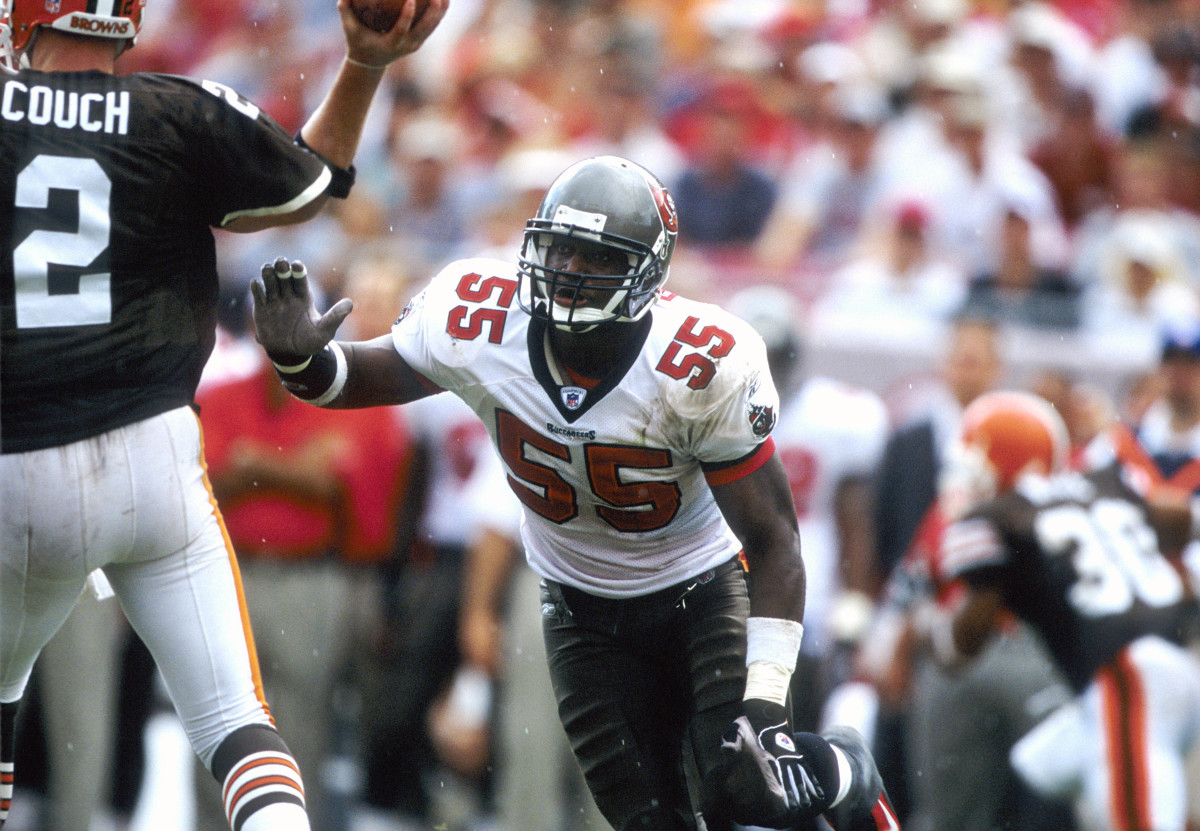
For the better part of their first two decades, the Buccaneers were laughable losers. That changed beginning in 1995, when Tampa Bay used its two first-round picks on defensive tackle Warren Sapp and linebacker Derrick Brooks.
Brooks became the linchpin for coordinator Monte Kiffin’s Tampa 2 defense. He was the 2002 Defensive Player of the Year, an 11-time Pro Bowler, a five-time first-team All-Pro and a Walter Payton Man of the Year recipient. Brooks also went into the Hall of Fame on his first ballot in ’14.
Tennessee Titans
Earl Campbell, RB, 1978
How great was Campbell? Campbell played two seasons with the then Oilers in the 1970s and was named to the All-Decade Team. Enough said.
Campbell lasted only eight NFL seasons, but the bruising back was a force. Known as the Tyler Rose, Campbell ran for 5,081 yards and 45 touchdowns over his first three seasons, earning MVP honors in 1979. He was also Rookie of the Year and named first-team All-Pro from ’78 to ’80, before posting three of his five total Pro Bowl years after that.
Washington Commanders
Sammy Baugh, QB, 1937
In the draft’s second year of existence, Washington found the greatest player in franchise history with Baugh. Out of TCU, Baugh helped revolutionize the position of quarterback alongside the Bears’ Sid Luckman, while also winning two titles.
Baugh was a two-way player, and in 1943 led the NFL in defensive interceptions (11), punting yardage (2,295) and completion percentage (55.6). A four-time first-team All-Pro and a member of the ’40s All-Decade Team, Baugh was enshrined in Canton with its inaugural class of ’63.
